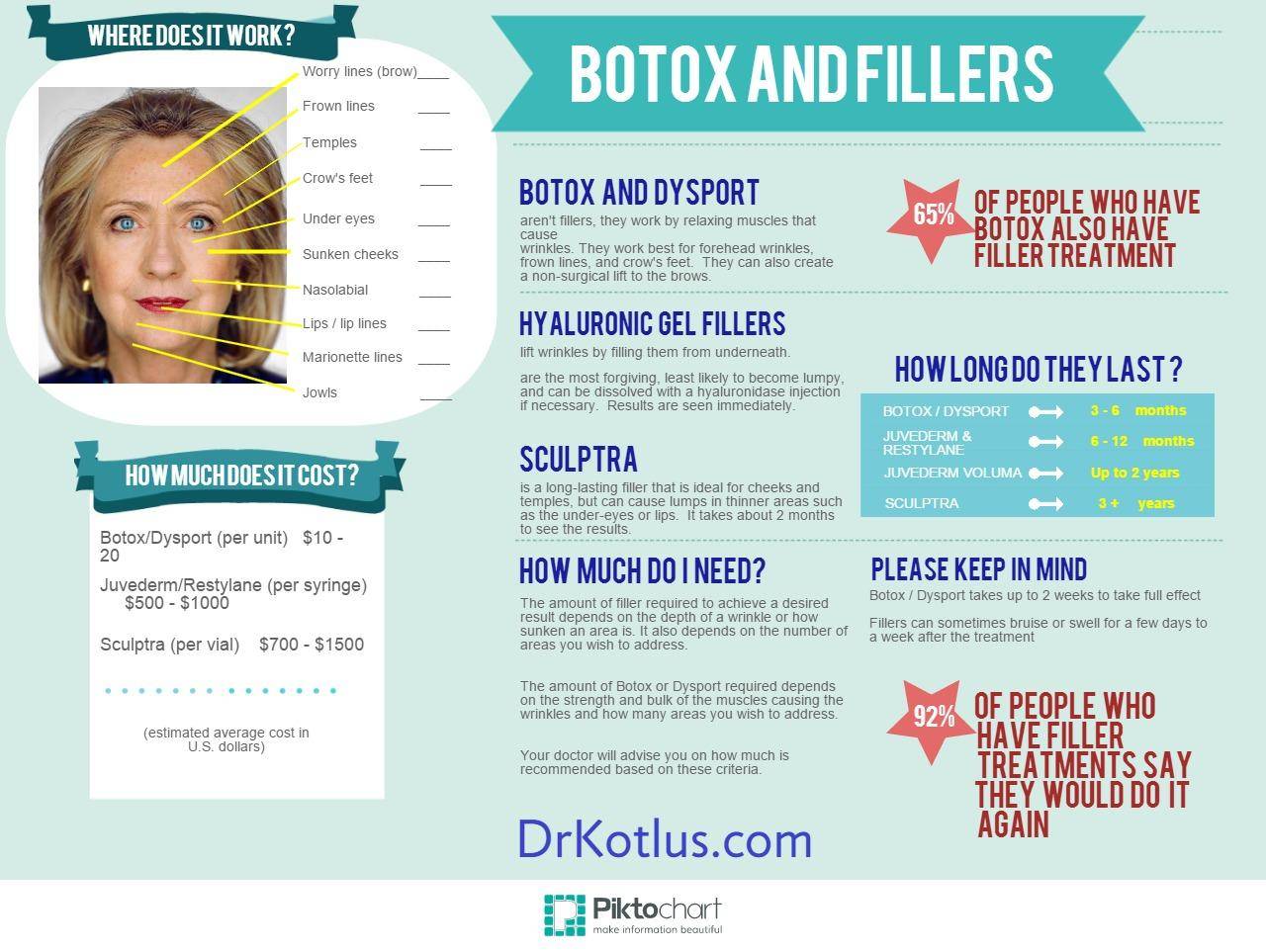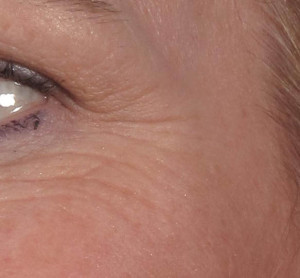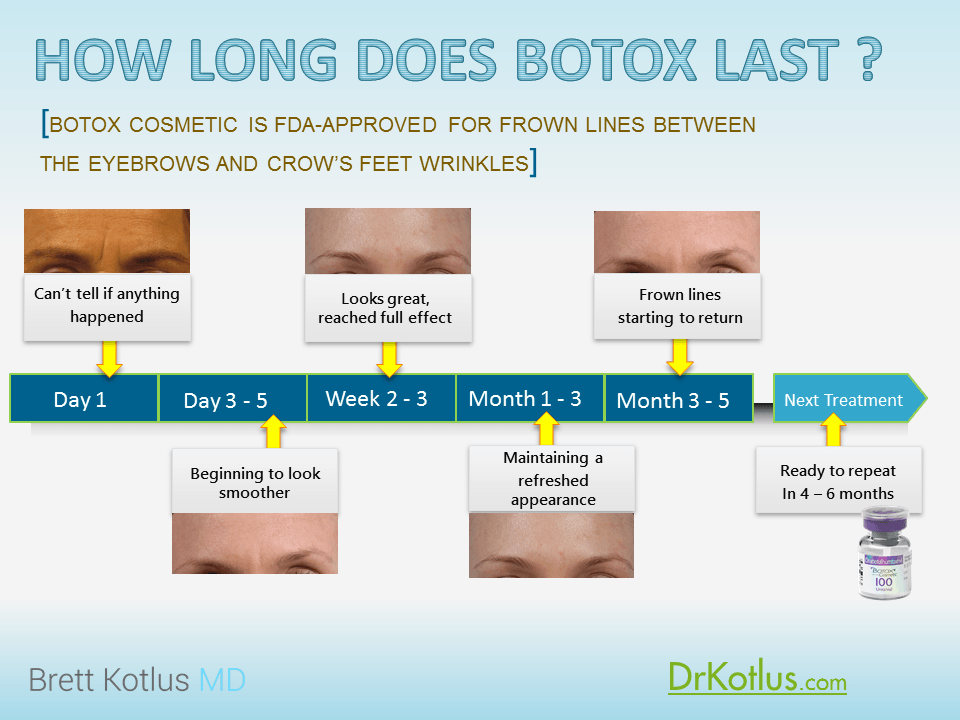What is the difference between Botox and Fillers ?
Botox or fillers ?
“Do I need Botox and fillers?”
I’m asked this question almost every day in any of my New York offices (not to imply that wrinkles only happen to New Yorkers, it’s just where I practice).
The answer depends on where you have wrinkles or loss of fullness.
Sometimes the answer is both Botox and filler
Botox works best around the eyes- the frown lines between the eyebrows, the crow’s feet, and the forehead. Botox (and Dysport) relax the muscles that cause these expression lines.
In the hands of a Botox expert, Botox can gently lift the eyebrows, improve lines around the mouth, and lift the corners of the mouth.
Fillers are best for deeper creases, nasolabial creases (from the side of the nose to the mouth), lines that are not from expressions, and sunken areas (under eyes, cheeks, lips, temples).
“Will I have to do it again?”
Yes, if you want to keep looking younger . This infographic I made describes some of the differences and applications of Botox and fillers including the very popular Juvederm Voluma, Sculptra, and Restylane. Most of my patients who enjoy the benefits of injectable treatments undergo Botox approximately 3 times per year and fillers once or twice a year.



